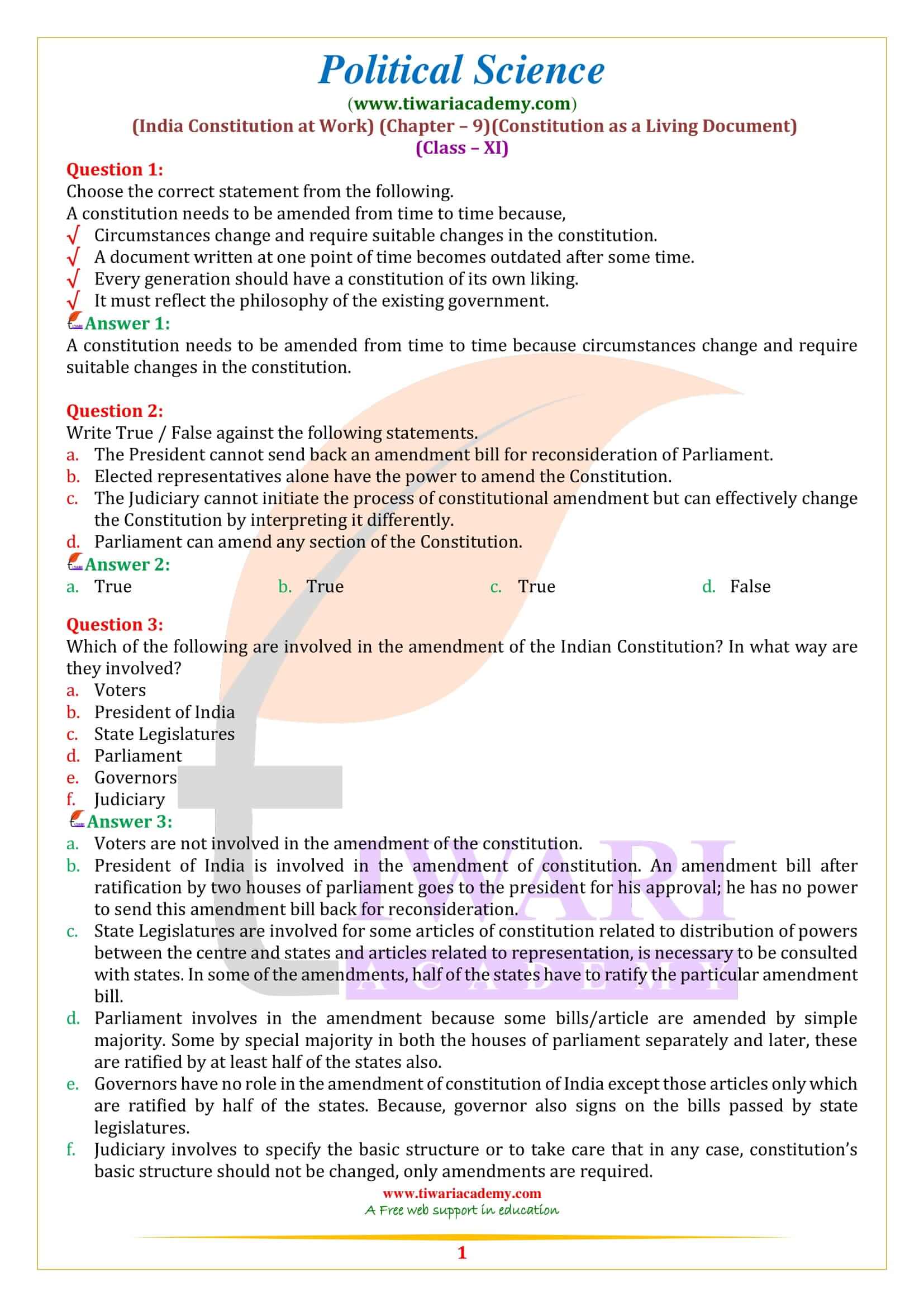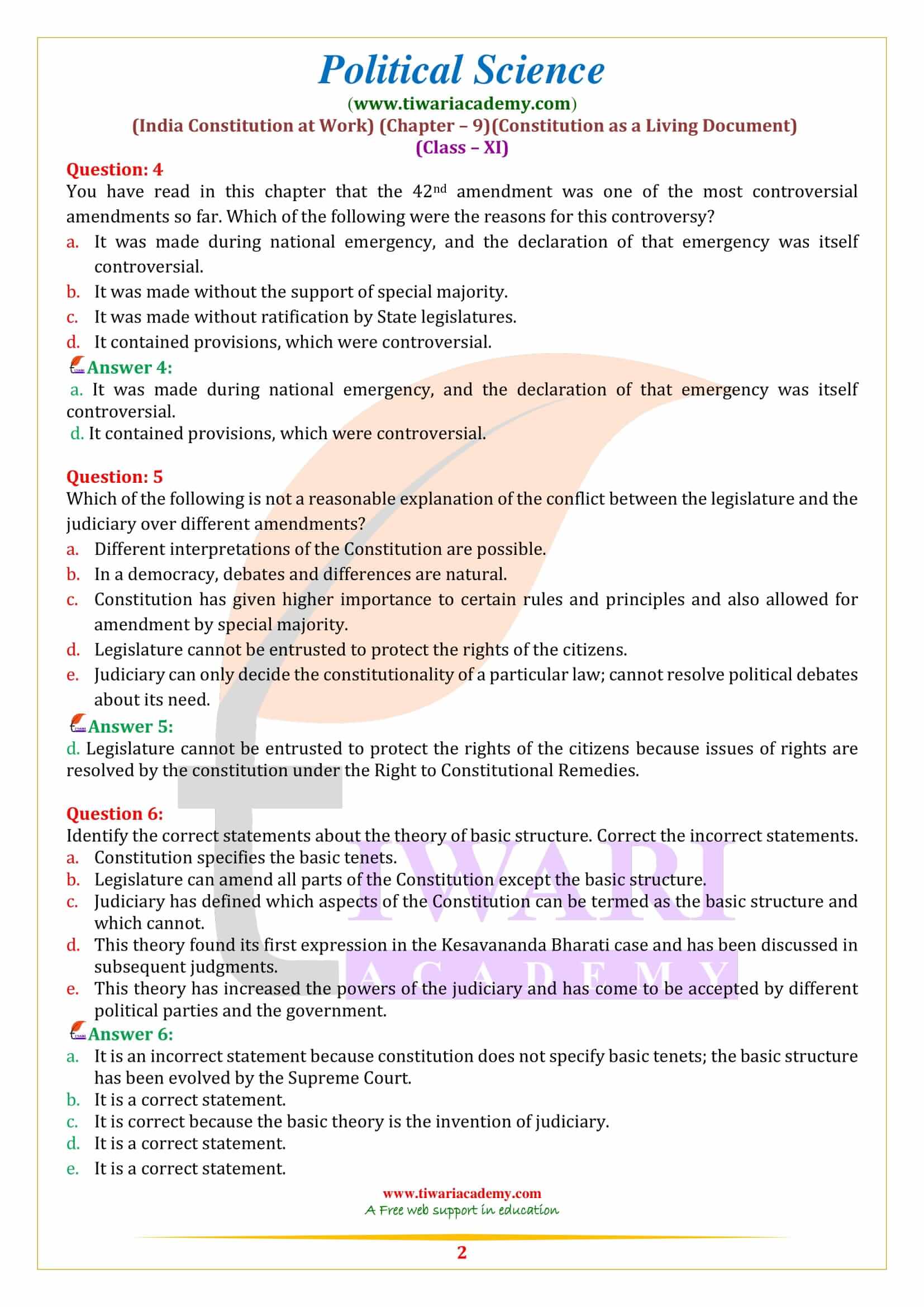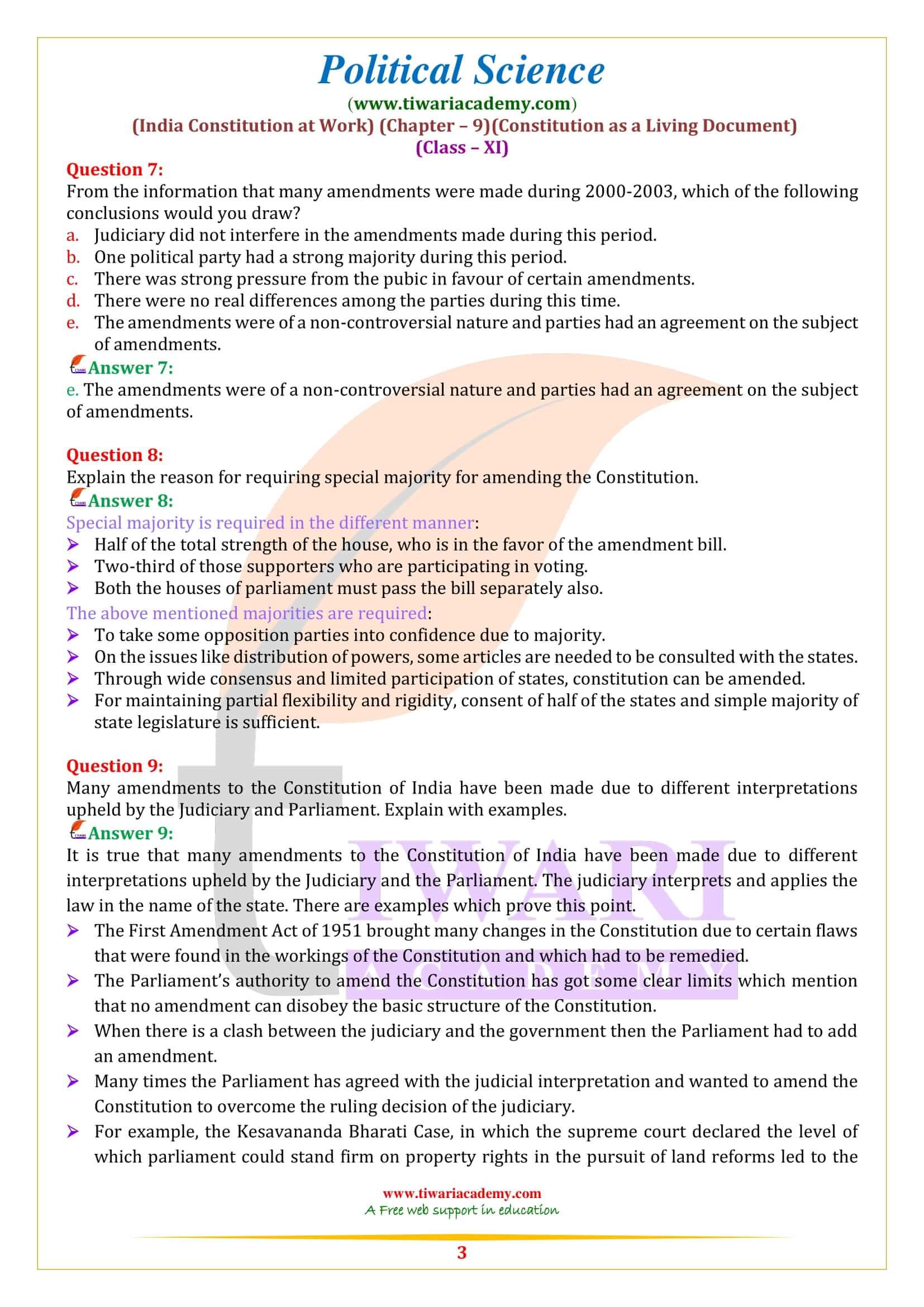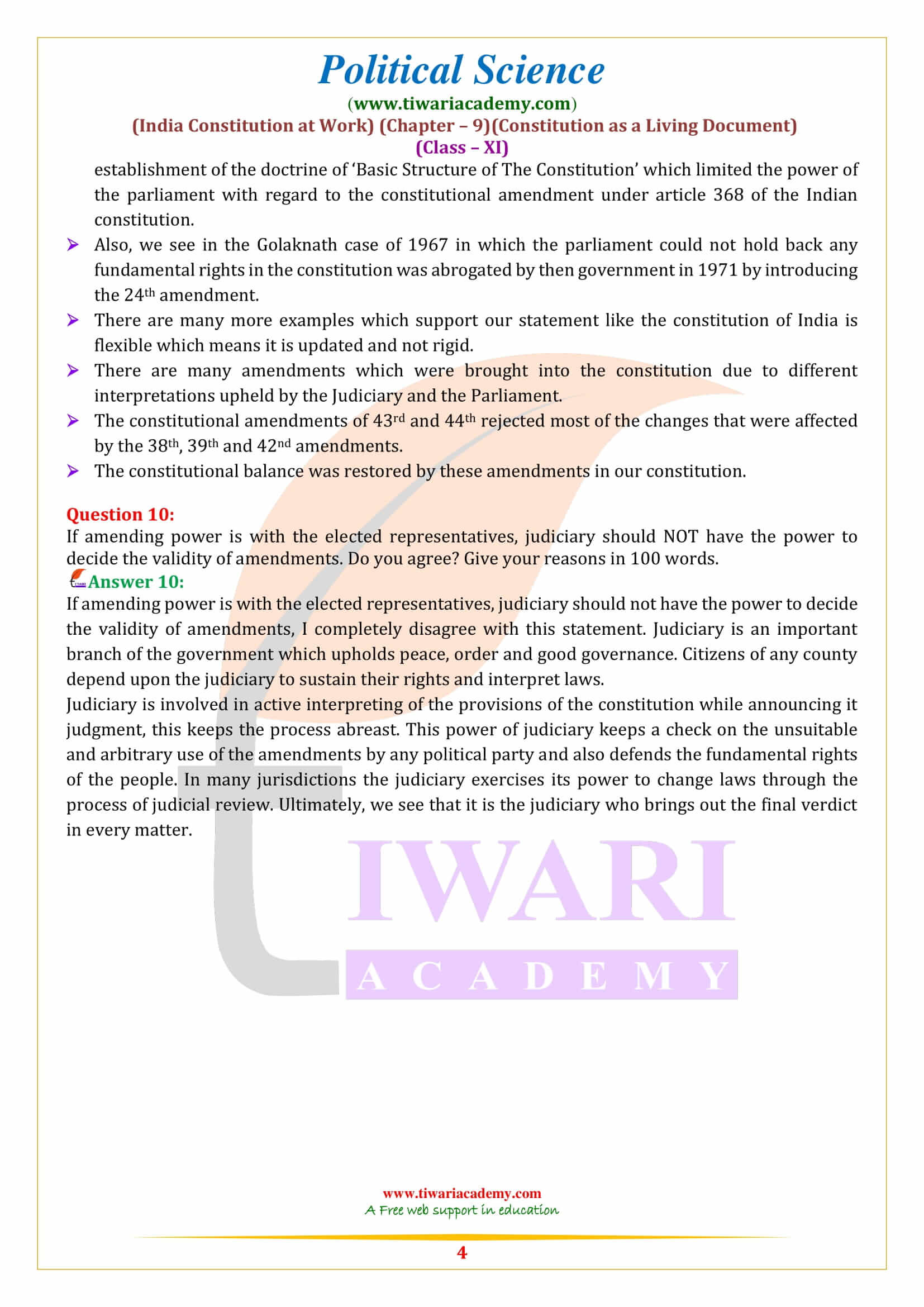NCERT Solutions for Class 11 Political Science Chapter 9 Constitution as a Living Document in Hindi and English Medium prepared and updated for new academic session 2025-26. Get here question answer of textbook Indian Constitution at Work in class 11 Political Science.
NCERT Solutions for Class 11 Political Science Chapter 9
If amending power is with the elected representatives, judiciary should NOT have the power to decide the validity of amendments. Do you agree? Give your reasons in 100 words.
If amending power is with the elected representatives, judiciary should not have the power to decide the validity of amendments, I completely disagree with this statement. Judiciary is an important branch of the government which upholds peace, order and good governance. Citizens of any county depend upon the judiciary to sustain their rights and interpret laws.
Judiciary is involved in active interpreting of the provisions of the constitution while announcing it judgment, this keeps the process abreast. This power of judiciary keeps a check on the unsuitable and arbitrary use of the amendments by any political party and also defends the fundamental rights of the people. In many jurisdictions the judiciary exercises its power to change laws through the process of judicial review. Ultimately, we see that it is the judiciary who brings out the final verdict in every matter.
Many amendments to the Constitution of India have been made due to different interpretations upheld by the Judiciary and Parliament. Explain with examples.
It is true that many amendments to the Constitution of India have been made due to different interpretations upheld by the Judiciary and the Parliament. The judiciary interprets and applies the law in the name of the state. There are examples which prove this point.
- The First Amendment Act of 1951 brought many changes in the Constitution due to certain flaws that were found in the workings of the Constitution and which had to be remedied.
- The Parliament’s authority to amend the Constitution has got some clear limits which mention that no amendment can disobey the basic structure of the Constitution.
- When there is a clash between the judiciary and the government then the Parliament had to add an amendment.
- Many times the Parliament has agreed with the judicial interpretation and wanted to amend the Constitution to overcome the ruling decision of the judiciary.
- For example, the Kesavananda Bharati Case, in which the supreme court declared the level of which parliament could stand firm on property rights in the pursuit of land reforms led to the establishment of the doctrine of ‘Basic Structure of The Constitution’ which limited the power of the parliament with regard to the constitutional amendment under article 368 of the Indian constitution.
- Also, we see in the Golaknath case of 1967 in which the parliament could not hold back any fundamental rights in the constitution was abrogated by then government in 1971 by introducing the 24th amendment.
- There are many more examples which support our statement like the constitution of India is flexible which means it is updated and not rigid.
- There are many amendments which were brought into the constitution due to different interpretations upheld by the Judiciary and the Parliament.
- The constitutional amendments of 43rd and 44th rejected most of the changes that were affected by the 38th, 39th and 42nd amendments.
- The constitutional balance was restored by these amendments in our constitution.
Explain the reason for requiring special majority for amending the Constitution.
Special majority is required in the different manner:
- Half of the total strength of the house, who is in the favor of the amendment bill.
- Two-third of those supporters who are participating in voting.
- Both the houses of parliament must pass the bill separately also.
The above mentioned majorities are required. To take some opposition parties into confidence due to majority.
- On the issues like distribution of powers, some articles are needed to be consulted with the states.
- Through wide consensus and limited participation of states, constitution can be amended.
- For maintaining partial flexibility and rigidity, consent of half of the states and simple majority of state legislature is sufficient.
Identify the correct statements about the theory of basic structure. Correct the incorrect statements.
a. Constitution specifies the basic tenets.
b. Legislature can amend all parts of the Constitution except the basic structure.
c. Judiciary has defined which aspects of the Constitution can be termed as the basic structure and which cannot.
d. This theory found its first expression in the Kesavananda Bharati case and has been discussed in subsequent judgments.
e. This theory has increased the powers of the judiciary and has come to be accepted by different political parties and the government.
Answer 6:
a. It is an incorrect statement because constitution does not specify basic tenets; the basic structure has been evolved by the Supreme Court.
b. It is a correct statement.
c. It is correct because the basic theory is the invention of judiciary.
d. It is a correct statement.
e. It is a correct statement.





